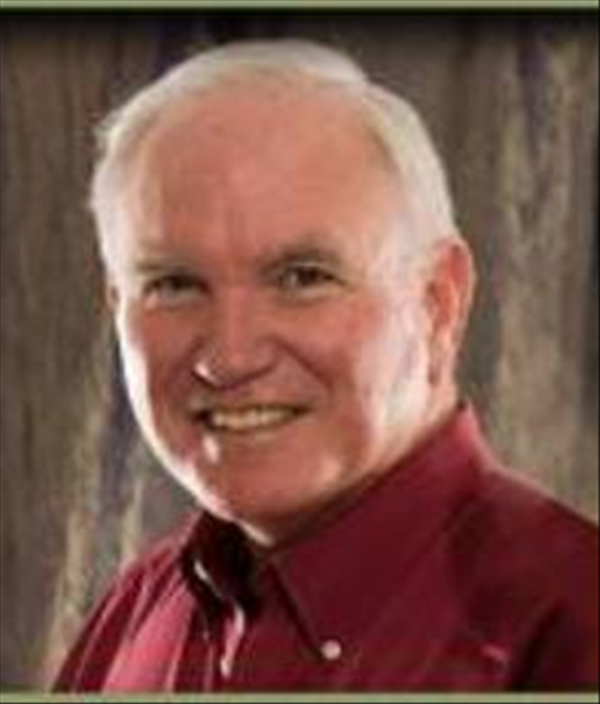This Ask Roger article may feature insights from Roger's wife, Dr. Julie Barrier, co-founder of Preach It, Teach It, worship minister, concert artist, and adjunct professor at Golden Gate Baptist Theological Seminary, or his daughter, Brie Barrier Wetherbee, a sought-after Bible teacher and conference speaker, author, analyst, and Christian theologian.
How Can We Trust That the Bible Is Reliable?

Dear Roger,
How can we trust that the Bible is reliable?
Sincerely, Alexa
Dear Alexa,
The Bible is an old book in a world where age is no longer considered an advantage. If we are going to trust the Bible, we must have sound, proven reasons to do so. At stake are issues as timely as our approach to sexuality, ethics, morals, values, money, the economy, marriage, work, welfare, abortion, government, and worship—just to mention a few.
Recently, I was looking through an old file cabinet from at least forty years ago that dealt with this subject. Using it as a guide, I have selected eight key reasons why the Bible is reliable. I hope that they will allow you to be bold in your evangelism, build your faith stronger, and help mature your spiritual life.
Photo Credit: ©Unsplash/Ben White
1. It is unusual to see the same theme consistently repeated over a span of 1,600 years without wavering.
The number of words written in the last 6,000 years (since writing was invented) are countless. The writings of humans are marked by disunity and contradiction. Words written by more than one author often contain glaring discrepancies in philosophy, facts, style, and ideas.
Josh McDowell, the Christian apologist, pointed out in Great Books of the Western World; “If you take ten authors from the same walks of life, the same time period, the same country, and the same language, and asked them to expound on one basic subject, would such a conglomeration all agree? Of course not.”
Yet, from start to finish, the Bible has one simple theme: Humankind is sinful and needs a Savior. Jesus Christ died on the cross to forgive our sins and give us eternal life in heaven with Him.
Consider that the Bible was written:
- By 40 different authors
- In 66 books
- Over a time period of 1,600 years
- In three languages (Hebrew, Greek, and Aramaic)
- On three continents (Asia, Africa, and Europe)
- By writers from all walks of life: prophets (like Jeremiah), priests (such as Zechariah), shepherds (like Amos), a doctor (Luke), a tax collector (Matthew), fishermen (like Peter), and preachers (such as Paul).
- With a gap of more than 400 years between the end of the Old Testament and the beginning of the New Testament.
Despite this wide diversity, the Bible is one book with the same theme from start to finish.
2. Hundreds of events, people, and things are prophesied in the Bible – all of which have come true.
Let me share a few fulfilled prophecies concerning Jesus:
Virgin Born – Prophesied Isaiah 7:14 – Fulfilled Luke 1:26-35
Birth in Bethlehem – Prophesied Micah 5:2 – Fulfilled Matthew 2:1
Triumphal Entry on Palm Sunday – Prophesied Zachariah 9:9 – Fulfilled Matthew 21:1-11
Betrayed by a Friend – Prophesied Psalm 41:9 – Fulfilled Matthew 26:20-25
Falsely Accused by Leaders – Prophesied Psalm 35:11 – Fulfilled Matthew 26:59-68
Silent before His Accusers – Prophesied Isaiah 15:7 – Fulfilled Matthew 27:12-14
Hands and Feet Pierced – Prophesied Psalm 22 16 – Fulfilled John 20:25
Said “My God My God Why Hast Thou Forsaken Me?” – Prophesied Psalm 22:1 – Fulfilled Matthew 27:46
Crucified With Robbers – Prophesied Isaiah 53:12 – Fulfilled Matthew 27:38
Lots Cast for His Clothes – Prophesied Psalm 22:18 – Fulfilled John 19:23-24
Bones Not Broken – Prophesied Psalm 34:20 – Fulfilled John 19:33
Thirsted on the Cross – Prophesied Psalm 22:15 – Fulfilled John 19:28
Buried in the Tomb of a Rich Man – Prophesied Isaiah 53:9 – Fulfilled Matthew 27:57-61
Said “It Is Finished”– Prophesied Psalm 22:31 – Fulfilled John 19:30
Is that enough? Or would you like some more?
3. The Bible is historically accurate at every point where it’s been tested.
At the beginning of the 20th century, many enemies of the Bible declared that the Bible was more fable than actual history. Since then, archaeologists have documented many existing historical places that were mentioned in Scripture.
For example, the Old Testament mentions the Hittite nation over fifty times. Archaeologists scoffed until they found archaeological evidence of the Hittite nation.
Or consider that Luke 2:2 says Quirinius was the governor of Syria when Joseph and Mary went to the city of their birth, Bethlehem, to be counted in the census. Historical records had absolutely no mention of a Roman governor by this name. Then, a number of years ago, a rock was discovered with his name on it. Once again, the Bible was proved to be historically accurate. Many more examples exist today.

4. When properly understood, there is no conflict between science and the Bible.
We need to remember that the Bible is a religious book, while science is a science book.
Francis Bacon, the famous philosopher (1561 to 1626) understood the separation:
"Let no one think or maintain that a person can search too far or be too well studied in either the book of God's word or the book of God's works.”
Many Science vs. Scripture arguments today center around the reality of a Creator versus naturalistic evolution. Instead of being forced to believe one or the other, many look to theistic evolution as a good alternative. In other words, God created the universe and used evolution as a tool. I would encourage you to spend time studying these concepts. Reasons to Believe (www.reasons.org) is a wonderful resource.
Several passages do show a link between science and the Bible:
“The Lord sits enthroned above the circle of the earth” (Isaiah 40:22).
“By faith, we understand that the universe was formed at God’s command, so that what is seen was not made out of what is visible” (Hebrews 11:3).
Much controversy comes into play around Genesis chapter one, which says that the world and everything in it was created in six 24-hour days. Many scientists think that that is ludicrous when they can examine the evidence which demonstrates that the earth is at least four billion years old and the universe close to 13 billion years old.
In contrast, some are convinced that since the Bible literally counted those days, then that is what we’re supposed to believe.
One way to handle the issue is to see that the discrepancies go away when we understand that not all of the Bible is literal. Sometimes it is written in poetry. When we read poetry we often think of rhyming words: “Hickory dickory dock, the mouse ran up the clock.”
On the other hand, Hebrew poetry rhymes thoughts: “Moab is my washbasin, upon Edom I toss my sandal; over Philistia, I shall in triumph” (Psalm 60:8). God does not wash His hands, and He does not wear sandals. This is Hebrew poetry rhyming words and thoughts regarding God’s destruction of his enemies.
Moses wrote much of the book of Genesis in this Hebrew poetry style. Let me illustrate.
Genesis one says that the earth was “without form and empty”. So, God gave it form and then filled it.
On DAY 1, He formed light and darkness;
On DAY 2, He formed sun and sky;
On DAY 3, He formed land and vegetation;
On DAY 4, He filled the light and darkness with the sun, moon and stars;
On DAY 5, He filled the sky and seas with birds and fish.
On DAY 6, He filled the dry land and vegetation with animals and man.
Notice how days one, two, and three rhyme with days four, five, and six. You can also see that God formed the earth on days one, two, and three. Then He filled the earth on days four, five, and six. The thoughts “rhyme” across two different patterns.
Also, each of the created things mentioned here were Hebrew gods. Moses was encouraging God’s people never to worship anyone but Him. The Egyptian gods were nothing compared to Him!
Moses was not giving us a science book on how God created the universe. He was giving the Exodus-era Israelites a religious book to remind them and us that the Egyptian gods were not gods at all. Moses’ God created them.
Photo Credit: © SparrowStock
5. Textual preservation guarantees that the manuscripts we have today are exactly what the original writers wrote.
The original documents are called “autographs.” None of those are in existence today. However, the copies can be traced back thousands of years. How certain are we that the original text has been preserved?
The earliest copies of the original Old Testament text dates back over 2,500 years. These copies are remarkably error-free. Biblical Hebrew scribes had an elaborate counting system for preserving accuracy. At the end of each page, the scribe counted the number of letters to ensure accuracy. They knew which letter was exactly in the middle of the text. If it did not match, they threw away that copy and started over.
The New Testament autographs were all written before the end of the first century. They go back in time to the original writers. Over 3,500 extant copies have been found and translated. Biblical Scholars say that by comparing all the various pieces, they know 99.9% of what the original writers wrote when they wrote. The 0.1 percent affects no major teaching or theology. The American Society Greek Bible covers all of this if you would like to pursue further study.
6. The Bible has a powerful impact on both society and individuals.
The Bible’s impact on society is dramatic. For example, most hospitals were started by Christians. Christians pioneered orphanages and were the impetus for child protective agencies.
The Bible has often brought new respect and freedom in places where women are treated little better than animals.
The sailors and women described in the book, Mutiny on the Bounty, were cast aside on Pitcairn Island in the Pacific Ocean and destined to die. The thirty or so unrestrained men and women were falling into moral debauchery when one of them found a Bible. They decided to follow its teachings, and everything changed for the better. In fact, when those who were marooned were later rescued the rescuers were shocked at the impressive moral society that had developed.
In the 1970s, the United States the Supreme Court outlawed prayer and the Bible in public schools. Our society has become more degenerate and filled with unrestrained anarchy ever since.
We live in a society where people are saying things like, “It’s my right to do anything that I want.” Our society doesn’t understand that we don’t have the right to do anything; the Constitution means that we have the freedom to do what is right.
And how often we hear the testimony of those whose lives were changed powerfully when they surrendered to Jesus Christ as their Lord and Savior!
Martin Luther, who sparked the Protestant Reformation, had his life forever changed when he saw in the Bible the words: “The just shall live by faith” (Habakkuk 2:4).

7. The Bible declares itself to be the Word of God.
The Bible claims that even though it was written by human authors, it was inspired by God. Therefore, it is completely trustworthy.
“Inspired” doesn’t mean a flash of insight that comes to us as we work on a particular problem or seek answers in a certain area. “Inspiration” means that the biblical writings were initiated and controlled by God through men like Moses, Isaiah, Matthew, and Paul. The Bible claims to be the very Word of God accurately given to man from God.
“All Scripture is given by inspiration of God, and is profitable for doctrine, for reproof, for correction, and for instruction in righteousness” (2 Timothy 3:16).
“Knowing this first, that no prophecy of Scripture is of any private interpretation for prophecy never came by the will of man, but holy men of God spoke as they were moved by the Holy Spirit” (2 Peter 1:20-21).
8. Jesus himself taught that the Bible is 100% accurate.
Jesus Christ used the Bible continually in his ministry:
He called it “the Word of God” (Mark 7:13) and “the commandment of God” (Mark 7:8).
He accepted that the persons and events mentioned in the Scriptures were historical: Adam and Eve; Noah and the flood; Lot's wife; Jonah and the big fish; and Satan during His temptations.
Let me conclude by encouraging you to dig deeply into the Word of God and pursue your own understanding of its teachings, origin, and authenticity. Search through preachitteachit.org to find hundreds of articles, sermons, and articles about each one of these eight reasons, then decide for yourself.
I always find that searching for the truth myself leads to a stronger, more personal belief system that I can count on as I walk through life. I hope you will continue to build your own.
Well, Alexa,
I hope this helps you to understand how you can trust the reality of the Bible.
Love, Roger
Photo Credit: © SparrowStock
Originally published June 15, 2021.






